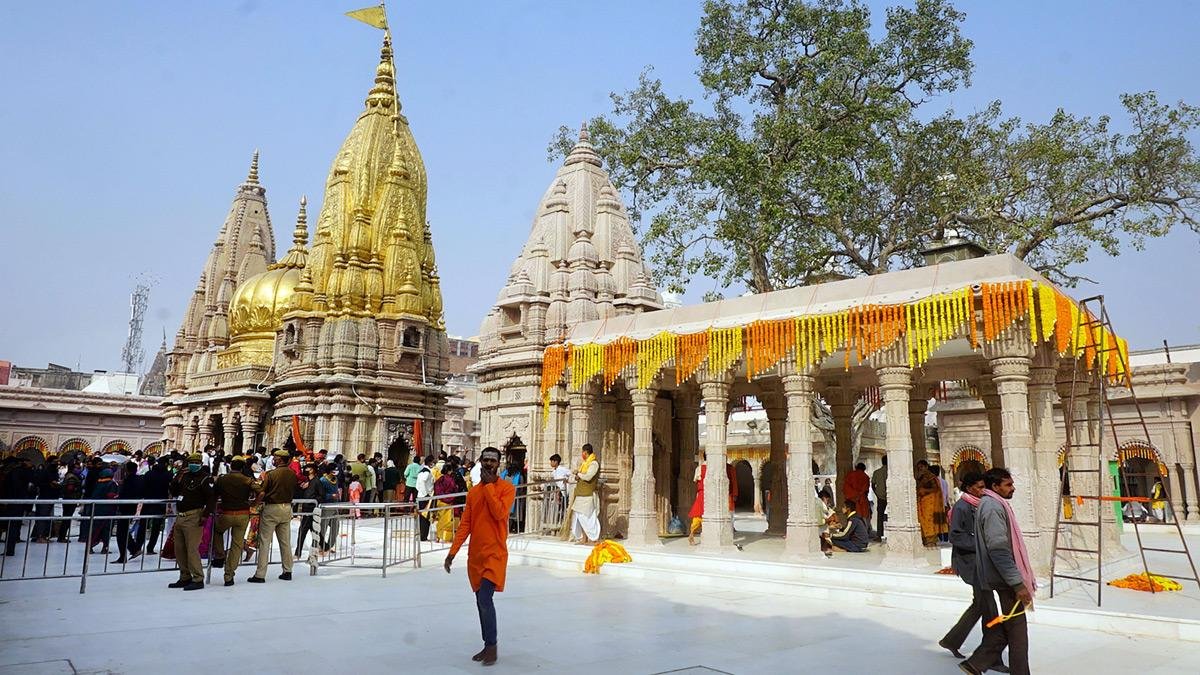The Kashi Vishwanath Temple is one of the most sacred Hindu pilgrimage sites. It is a famous Hindu temple dedicated to God Shiva. It is located in Vishwanath Gali, Varanasi, Uttar Pradesh, India. It is situated on the western banks of the river Ganga. The presiding deity is known by the names Shri Vishwanath and Adi Vishweshwara. Recently developed Vishwanath Dham corridor by PM Narendra Modi has added another feather to the temple’s cap.
When Egypt did not exist, Kashi was. When Rome did not even exist in people’s minds, Kashi was.
~ Sadhguru
Varanasi is the oldest city on this planet, it is older than the history itself. It is people say that Kashi is situated on God Shiva’s trishul and God Shiva had built this city. Kashi Vishwanath Temple is the heart of this city. History of this temple, in which the temple is razed and raised multiple times, is in people’s memory and it started with the rise of Sanatan Dharma. First written mention of this temple is in the Puranas in Kashi Khanda (section) of Skanda Purana (4th-5th century).
Sanatan Dharma - It is not a religion or a belief system. This is human ingenuity as to how to access the beyond.
~ Sadhguru
History of destruction and rennovation of Kashi Vishwanath temple
The original Vishwanath Temple which was also known as Adi Vishveswara temple, was destroyed partially (temple’s top was shaterred) in 11th century by islamic invader Qutb ud-Din Aibak but the puja rituals was continued in the broken temple. Later the temple was completely destroyed by Ghurids in 1184 AD. The temple reestablished away from the main site of original temple during the reign of then Delhi’s Sultan Iltutmish. Which was again completely destroyed by Sikandar Lodhi.
Later, Raja Man Singh of Amer rebuilt the temple under rule of Mughal emperor Akbar which was renovated was Raja Todar Mal and completed by Vir Deo Singh.
Then come the ugliest phase for this temple. On 18th April 1669, out of sheer hatred against Hindu, Mughal Emperor Aurangjeb destroyed the temple completely and built the Gyanvapi mosque in place of original temple. Its ruin still can be seen.

When Maratha came in power defeating mughals, few kings under Maratha empire tried to establish the temple back but failed to do so, as few islamic kings were in still in power in the region. In 1780, Malhar Rao’s daughter-in-law Ahilyabai Holkar rebuilt the present temple adjacent to the Gyanwapi mosque. In 1835, Maharaja Ranjit Singh of the Sikh Empire, donated 1 tonne of gold for plating the temple’s dome.
In 21st century, after independence current PM Narendra Modi built Vishwanath Dham corridor in Varanasi to connect the iconic Kashi Vishwanath temple and the ghats along the river Ganga. It will ensure easy movement of pilgrims and devotees between the ghats and the temple. This project will establish the erstwhile glory of Kashi Vishwanath Dham Temple.
Assam CM Himanta Biswa Sarma prays at Kashi Vishwanath temple. pic.twitter.com/KRvrmZ7wG0
— News Arena India (@NewsArenaIndia) October 15, 2023
Now-a-days, prominent people from all around the world are visiting the temple and spreading the eternal knowledge of Sanatan Dharma to the seekers.
